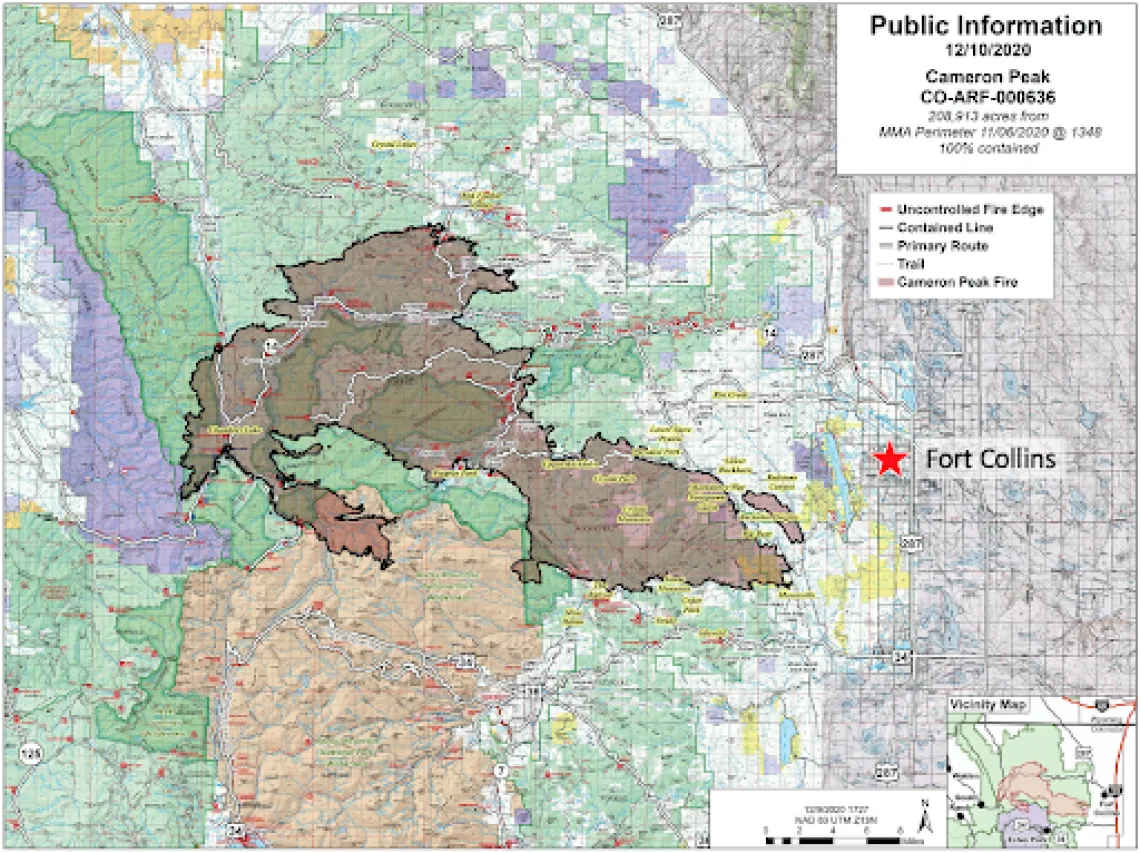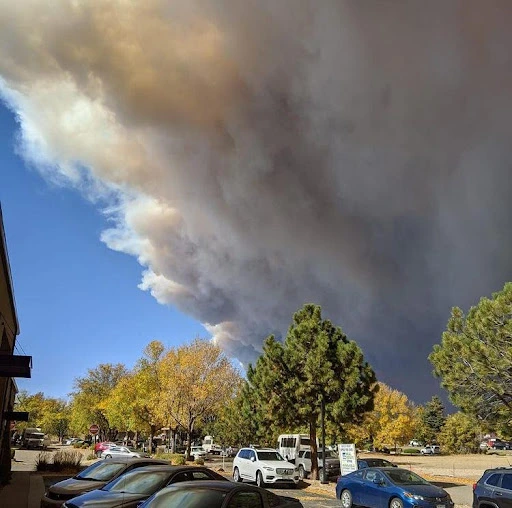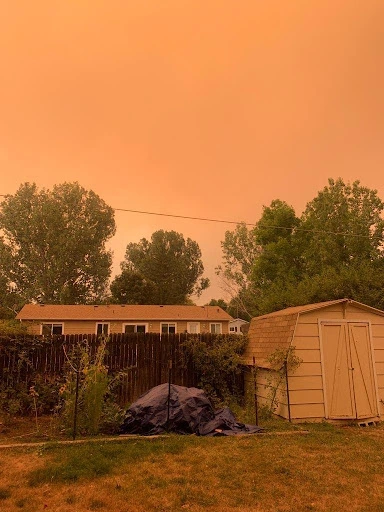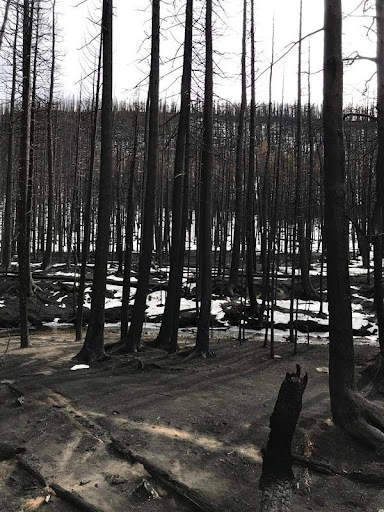Transforming the Emotional Stresses of Climate Change and Wildfires into Action Through the SW CASC NRWD Fellowship

Figure 1. Map of the Cameron Peak Fire extent (modified figure from inciWeb).
Johanna Eidmann is a PhD student at Colorado State University in Fort Collins, Colorado. Her research is focused on understanding landsliding and sediment dynamics in Puerto Rico. Below are her reflections on being a part of the SW CASC Natural Resources Workforce Development (NRWD) Fellowship during the last year.
Many know Colorado for its raw wilderness and beauty. It offers incredible and easy access to nature that, for many, is an outlet to unwind from the stresses in our day-to-day lives. The importance of the outdoors became especially apparent during the height of the pandemic, when people filled the trails to relax after being stuck at home. For the first time since moving to Fort Collins in 2016, I found almost all of the trail parking lots regularly filled to capacity.
In concert with the stresses of the pandemic, the summer of 2020 was abnormally dry. I was used to the daily “monsoon” season defined by 30-minute downpours in the summer, yet those never came. We were experiencing a new, arid summer that visibly stressed the vegetation in the area. I missed the rain. Before 2020 the vegetation was already stressed by warmer winters and drier weather, which led to the unprecedented outbreak of the mountain pine beetle. As a result, the forests were filled with dead trees that acted as fuel ready to burn.
The dryness and increased use of the outdoors produced a season of rampant wildfires, many of which were started by humans. On August 13, 2020, the Cameron Peak Fire started near Chambers Lake, an approximately 1.5-hour drive west of Fort Collins. Because of the heat, fuel from dead trees, and extremely dry conditions, the fire quickly spread and became larger and larger. Helicopters began to be heard on a daily basis as they made their way to the fire, and big clouds began to form in the distance. The dark clouds started to inch into Fort Collins, carrying the ash of burnt trees into our yards, and turning the sky purple. At one point, I couldn’t even see my neighbor’s house, and the air quality index had spiked to >300 (greater than 300 is the highest level of concern; https://www.airnow.gov/aqi/aqi-basics/). Bike commuters began wearing masks on their rides to/from work—not because of the pandemic, but because of the air quality.
Every day I checked in online on the movement of the fire, and experienced a sense of personal loss as some of my favorite hiking, camping, and backcountry skiing trails were burned. The fire continued to creep towards Fort Collins until it no longer was a fire located a 1.5-hour drive away, but one that you could see on the west side of town.
In September, the fall semester began at Colorado State University, and I was in charge of teaching the lab portion of an introductory Geology course for majors. I tried to convey an enthusiasm for Geology, but I could only empathize for these freshmen, who were experiencing college for the first time in this environment with both a global pandemic and nearby large fire. They were largely confined to their dorm rooms, had limited chances to meet other students and develop friendships, and had limited access to fresh air outside of their rooms due to the fire. A CDC report found that in June, about 1 in 4 students considered suicide over the past 30 days. Another report found that 35% of undergraduates were screened positive for major depressive disorder. The pandemic and fire made the days feel heavy for us all.
The past year has definitely tested my own mental health. Many in my generation and younger are experiencing “eco-anxiety”, a term used to describe a feeling of anxiety and stress about climate change. While I try to address this eco-anxiety and feeling of guilt towards my own daily carbon contribution by changing my habits—often choosing to bike rather than drive and deciding to be on a vegetarian diet to lower my carbon footprint—at a certain point I also turn to ignorance to balance out this stress. Yet the fire over the past year made me unable to escape to this ignorance, as I continued to open my front door to a street filled with a purple haze.
This SW CASC NRWD Fellowship has brought a lot of emotional balance to my life over the past year. Our group’s topic navigates wildfires, and evaluates how different landscape management techniques—cultural and prescribed burns—can change how the landscape responds to and recovers from fire. This project has brought me hope that a better understanding and use of fire can allow us to better control future fires and protect the places that we cherish. Working with teammates from different academic backgrounds and skill sets has shown me the breadth of ways this topic can be analyzed and approached. It has made me appreciate the need for collaboration amongst stakeholders of different perspectives and objectives to achieve our mutual goal of protecting the places we love.
On December 2, 2020 the Cameron Peak Fire—now the largest recorded fire in Colorado—was finally 100% contained. Although it was a tough year, I am grateful for my team members for being such a supportive and positive group to work with, and the SW CASC for providing the opportunity to develop a project that helped translate my own feelings of anxiety and loss into one with purpose and hope.




